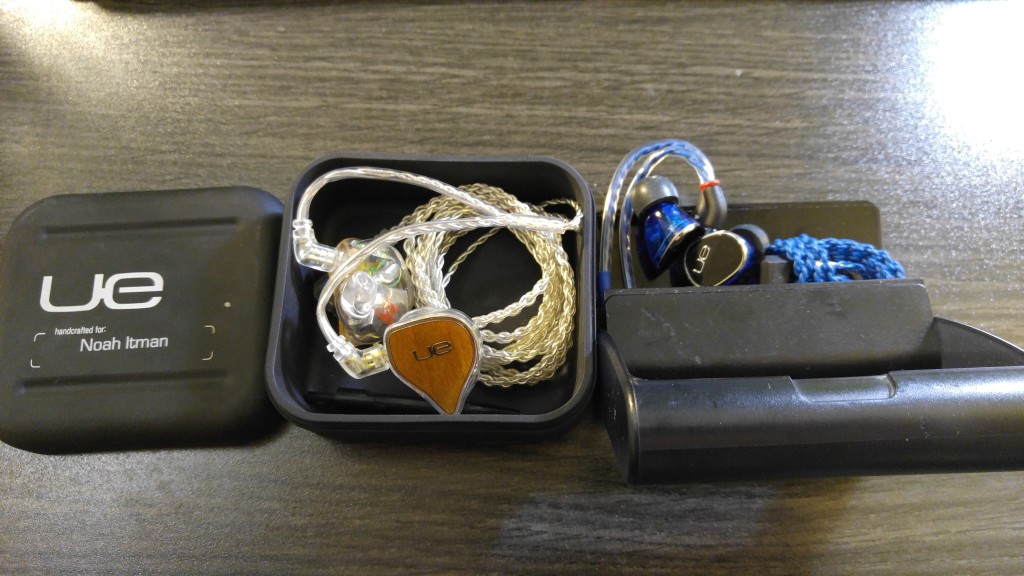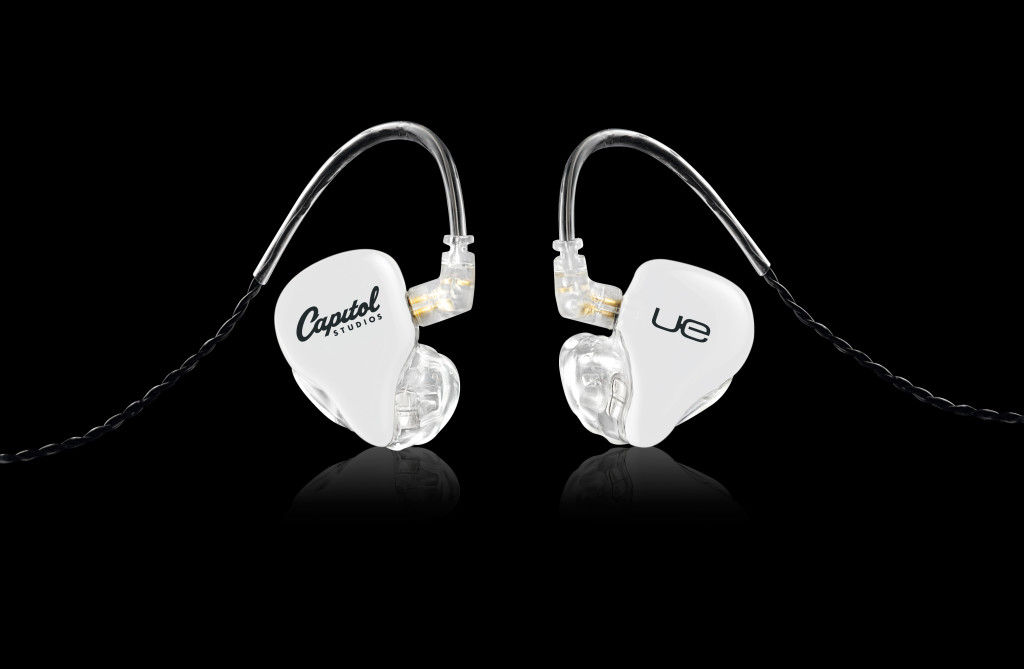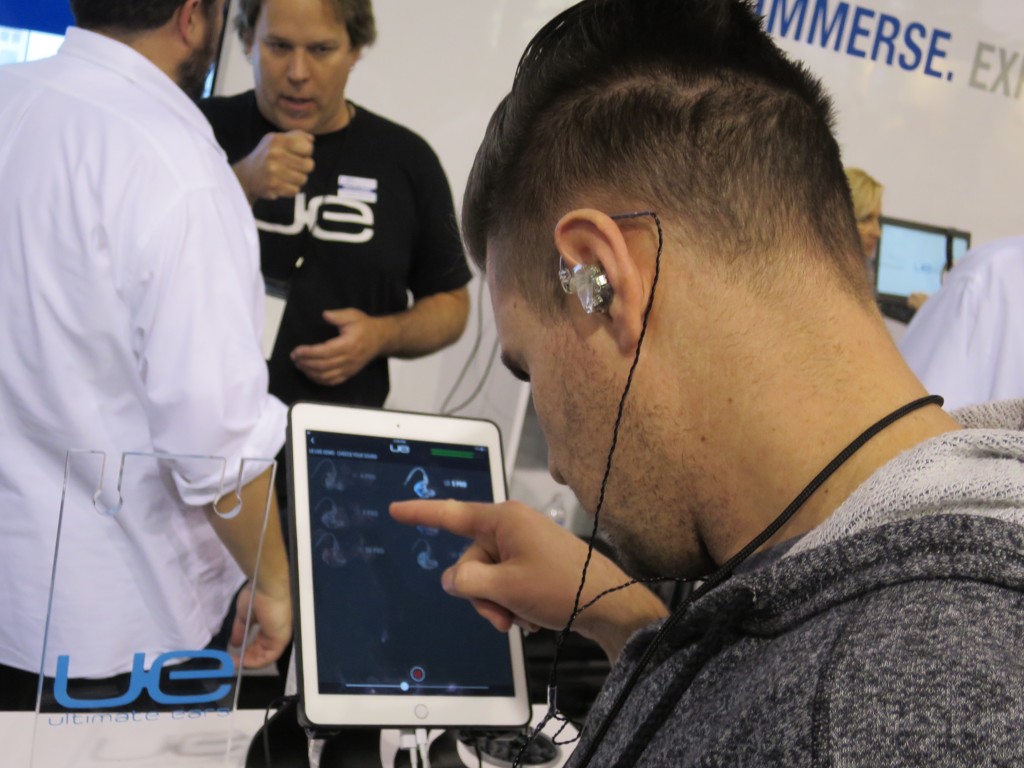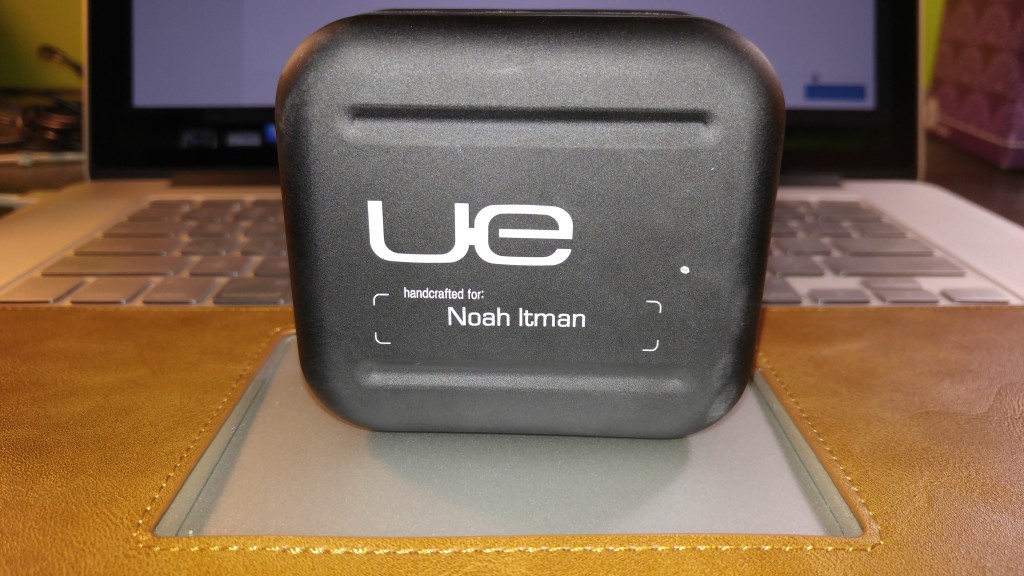An exclusive interview with Crispin Glover and Digital Music News.
I was given the opportunity to interview one of my favorite actors and showbiz rebels Crispin Hellion Glover. I cannot thank Crispin enough for giving me this unique opportunity to better understand someone who has been able to truly do something he loves while making substantial and provocative artistic statements.
Please make sure to check his site (CrispinGlover.com) for information on live performances and projects he is involved in!
Noah Itman: What inspired you to make your album “THE BIG PROBLEM ≠ THE SOLUTION. THE SOLUTION = LET IT BE” and do you think we’ll ever get a follow-up album?
Crispin Glover: There are some more recordings that have been made since “The Big Problem ≠ The Solution. The Solution = Let It Be.” Those recordings have been made with one of the same producers as “The Big Problem ≠ The Solution. The Solution = Let It Be.” The recording for “Ben” was made with this same producer although the reason for recoding “Ben” was because I was in “Willard”
With the record “The Big Problem ≠ The Solution. The Solution = Let It Be” I was approached by Barns and Barns who wanted to record with me. I knew their work and thought it would be a lark to record something with them. I recorded some things and then they let me know they were interested in making an album. It became apparent to me that a concept should be had and so I thought about some of what had been recorded and realized there already was a bit of a theme and that by recording other new things and getting rid of some of the things that were already recorded a good concept could come out of it. This is where The Big Problem ≠ The Solution. The Solution = Let It Be.. came from.
The album came out in 1989 and this was well before the Internet so a telephone number (not my home number) was printed on the album for people to call with their answer. Many people figured it out. The telephone message let people know information about how to order my books.
Clowny Clown Clown has had more attention in recent years than the rest of the album in the last several years because Youtube has made the promotional video available and many more people have seen that than heard the rest of the album. I am glad I made the video for that song, but of course a lot more has gone in to making the films.
We worked on The Big Problem ≠ The Solution. The Solution = Let It Be. for a couple of years. A lot of work was put in to it, and I am proud of the album. I think novelty album is probably the best way to describe it because you would really not call it a rock album, nor a poetry album. I do not think of “novelty album” as a pejorative.
There is another album’s worth of material that has small finishes that need to be made to release it. My mind mostly is on making and distributing my films and acting in other’s films. One of my favorite parts of making the films is working with the music for the films. Performing music is much lower on my priorities, but I am proud of the album and I need to put the second one out at some point and there could be something on the horizon for that.

NI: Are you willing to reveal what the secret message was and how many people answered it correctly?
CG: It is more important that people think about it on their own. Many people thought of it as what I was thinking it was. But that does not mean it is the only thing that is the correct way to think about it.
NI: How was the process of finding a distributor and publisher? Was there ever any difficulty with getting it manufactured in multiple formats?
CG: It was released through Restless Records in 1988 or 1989 at the time they still released records on Vinyl, Cassette Tape and CD. I was concerned.
NI: Can you tell me a bit about your upcoming shows this weekend?
CG: Yes, they are at the American Cinematheque at the Egyptian Theatre on Hollywood Blvd in Los Angeles this Friday and Saturday (3/18/16 – 3/19/16) at . Here is a link with more information http://bit.ly/1R1sbKq as well as my web site CrispinGlover.com
The live aspect of the shows I perform before the films I tour with are not to be underestimated. This is a large part of how I bring audiences in to the theater and a majority of how I recoup is by what is charged for the live show and what I make from selling the books after the shows.
For “Crispin Hellion Glover’s Big Slide Show” I perform a one hour dramatic narration of eight different books I have made over the years. The books are taken from old books from the 1800’s that have been changed in to different books from what they originally were. They are heavily illustrated with original drawings and reworked images and photographs.
I started making my books in 1983 for my own enjoyment without the concept of publishing them. I had always written and drawn and the books came as an accidental outgrowth of that. I was in an acting class in 1982 and down the block was an art gallery that had a book store upstairs. In the book store there was a book for sale that was an old binding taken from the 1800’s and someone had put their art work inside the binding. I thought this was a good idea and set out to do the same thing. I worked a lot with India ink at the time and was using the India ink on the original pages to make various art. I had always liked words in art and left some of the words on one of the pages. I did this again a few pages later and then when I turned the pages I noticed that a story started to naturally form and so I continued with this. When I was finished with the book I was pleased with the results and kept making more of them. I made most of the books in the 80’s and very early 90’s. Some of the books utilize text from the biding it was taken from and some of them are basically completely original text. Sometimes I would find images that I was inspired to create stories for or sometimes it was the binding or sometimes it was portions of the texts that were interesting. Altogether, I made about twenty of them. When I was editing my first feature film “What is it?” There was a reminiscent quality to the way I worked with the books because as I was expanding the film in to a feature from what was originally going to be a short, I was taking film material that I had shot for a different purpose originally and re-purposed it for a different idea and I was writing and shooting and ultimately editing at the same time. Somehow I was comfortable with this because of similar experiences with making my books.
When I first started publishing the books in 1988 people said I should have book readings. But the book are so heavily illustrated and they way the illustrations are used within the books they help to tell the story so the only way for the books to make sense was to have visually representations of the images. This is why I knew a slide show was necessary. It took a while but in 1992 I started performing what I now call Crispin Hellion Glover’s Big Side Show Part 1. The content of that show has not changed since I first started performing it. But the performance of the show has become more dramatic as opposed to more of a reading. For performing the shows I have always worn a black suit, white shirt and black tie with dress back shoes. The performance is a mixture of presentation and stepping in to characters and characterizations of the styles of books, so the dress has to be a neutral presentational suit.
People sometimes get confused as to what “Crispin Hellion Glover’s Big Slide Show (Parts 1&2)” is so now I always let it be known that it is a one hour dramatic narration of eight different profusely illustrated books that I have made over the years. The illustrations from the books are projected behind me as I perform the show. There is a second slide show now that also has 8 books. Part 2 is performed if I have a show with Part 1 of the “IT” trilogy and then on the subsequent night I will perform the second slide show and Part 2 of the “IT” trilogy. The second slide show has been developed over the last several years and the content has changed as it has been developed, but I am very happy with the content of the second slide show now.
The fact that I tour with the film helps the distribution element. I consider what I am doing to be following in the steps of vaudeville performers. Vaudeville was the main form of entertainment for most of the history of the US. It has only relatively recently stopped being the main source of entertainment, but that does not mean this live element mixed with other media is no longer viable. In fact it is apparent that it is sorely missed.
I definitely have been aware of the element of utilizing the fact that I am known from work in the corporate media I have done in the last 25 years or so. This is something I rely on for when I go on tour with my films. It lets me go to various places and have the local media cover the fact that I will be performing a one hour live dramatic narration of eight different books which are profusely illustrated and projected as I go through them, then show the film either What is it? Being 72 minutes or It is fine! EVERYTHING IS FINE being 74 minutes. Then having a Q and A and then a book signing. As I funded the films I knew that this is how I would recoup my investment even if it a slow process.

Volcanic Eruptions was a business I started in Los Angeles in 1988 as Crispin Hellion Glover doing business as Volcanic Eruptions. It was a name to use for my book publishing company. About a year later I had a record/CD come out with a corporation called Restless Records. About when I had sold the same amount of books as CD/records had sold it was very clear to me that because I had published my own books that I had a far greater profit margin. It made me very suspicious of working with corporations as a business model. Financing/Producing my own films is based on the basic business model of my own publishing company. There are benefits and drawbacks about self distributing my own films. In this economy it seems like a touring with the live show and showing the films with a book signing is a very good basic safety net for recouping the monies I have invested in the films
There are other beneficial aspects of touring with the shows other than monetary elements.
There are benefits that I am in control of the distribution and personally supervise the monetary intake of the films that I am touring with. I also control piracy in this way because digital copy of this film is stolen material and highly prosecutable. It is enjoyable to travel and visit places, meet people, perform the shows and have interaction with the audiences and discussions about the films afterwards. The forum after the show is also not to under-estimated as a very important part of the show for for the audience. This also makes me much more personally grateful to the individuals who come to my shows as there is no corporate intermediary. The drawbacks are that a significant amount of time and energy to promote and travel and perform the shows. Also the amount of people seeing the films is much smaller than if I were to distribute the films in a more traditional sense.
The way I distribute my films is certainly not traditional in the contemporary sense of film distribution but perhaps is very traditional when looking further back at vaudeville era film distribution. If there are any filmmakers that are able to utilize aspects of what I am doing then that is good. It has taken many years to organically develop what I am doing now as far as my distribution goes.
NI: How many of these presentations have you done? What do you get from them?
CG:I would say between 100 and 250 performances, but I really need to sit down and calculate.
NI: What points do you want to make that aren’t necessarily accepted in the mainstream media? Give a preview of the film. Why is it a “semi-autobiographical, psycho-sexual tale”?
CG: I am very careful to make it quite clear that What is it? is not a film about Down’s Syndrome but my psychological reaction to the corporate restraints that have happened in the last 20 to 30 years in film making. Specifically anything that can possibly make an audience uncomfortable is necessarily excised or the film will not be corporately funded or distributed. This is damaging to the culture because it is the very moment when an audience member sits back in their chair looks up at the screen and thinks to their self “Is this right what I am watching? Is this wrong what I am watching? Should I be here? Should the filmmaker have made this? What is it?” -and that is the title of the film. What is it that is taboo in the culture? What does it mean that taboo has been ubiquitously excised in this culture’s media? What does it mean to the culture when it does not properly process taboo in it’s media? It is a bad thing because when questions are not being asked because these kinds of questions are when people are having a truly educational experience. For the culture to not be able to ask questions leads towards a non educational experience and that is what is happening in this culture. This stupefies this culture and that is of course a bad thing. So What is it? Is a direct reaction to the contents this culture’s media. I would like people to think for themselves.

Steven C. Stewart wrote and is the main actor in part two of the trilogy titled It is fine! EVERYTHING IS FINE. I put Steve in to the cast of What is it? because he had written this screenplay which I read in 1987. When I turned What is it? from a short film in to a feature I realized there were certain thematic elements in the film that related to what Steven C. Stewart’s screenplay dealt with. Steve had been locked in a nursing home for about ten years when his mother died. He had been born with a severe case of cerebral palsy and he was very difficult to understand. People that were caring for him in the nursing home would derisively call him an “M.R.” short for “Mental Retard”. This is not a nice thing to say to anyone, but Steve was of normal intelligence. When he did get out he wrote his screenplay. Although it is written in the genre of a murder detective thriller truths of his own existence come through much more clearly than if he had written it as a standard autobiography. As I have stated, I put Steven C. Stewart in to What is it? When I turned What is it? in to a feature film. Originally What is it? Was going to be a short film to promote the concept to corporate film funding entities that working with a cast wherein most characters are played by actors with Down’s Syndrome. Steve had written his screenplay in in the late 1970’s. I read it in 1987 and as soon as I had read it I knew I had to produce the film. Steven C. Stewart died within a month after we finished shooting the film. Cerebral palsy is not generative but Steve was 62 when we shot the film. One of Steve’s lungs had collapsed because he had started choking on his own saliva and he got pneumonia. I specifically started funding my own films with the money I make from the films I act in when Steven C. Stewart’s lung collapsed in the year 2000 this was around the same time that the first Charlie’s Angels film was coming to me. I realized with the money I made from that film I could put straight in to the Steven C. Stewart film. That is exactly what happened. I finished acting in Charlie’s Angels and then went to Salt Lake City where Steven C. Stewart lived. I met with Steve and David Brothers with whom I co-directed the film. I went back to LA and acted in an lower budget film for about five weeks and David Brothers started building the sets. Then I went straight back to Salt Lake and we completed shooting the film within about six months in three separate smaller productions. Then Steve died within a month after we finished shooting. I am relieved to have gotten this film finally completed because ever since I read the screenplay in 1987 I knew I had to produce the film and also produce it correctly. I would not have felt right about myself if I had not gotten Steve’s film made, I would have felt that I had done something wrong and that I had actually done a bad thing if I had not gotten it made. So I am greatly relieved to have completed it especially since I am very pleased with how well the film has turned out. We shot It is fine! EVERYTHING IS FINE. while I was still completing What it? And this is partly why What is it? took a long time to complete. I am very proud of the film as I am of What is it? I feel It is fine! EVERYTHING IS FINE. will probably be the best film I will have anything to do with in my entire career. People who are interested in when I will be back should join up on the e mail list at CrispinGlover.com as they will be emailed with information as to where I will be where with whatever film I tour with. It is by far the best way to know how to see the films.
After Charlie’s Angels came out it did very well financially and was good for my acting career. I started getting better roles that also paid better and I could continue using that money to finance my films that I am so truly passionate about. I have been able to divorce myself from the content of the films that I act in and look at acting as a craft that I am helping other filmmakers to accomplish what it is that they want to do. Usually filmmakers have hired me because there is something they have felt would be interesting to accomplish with using me in their film and usually I can try to do something interesting as an actor. If for some reason the director is not truly interested in doing something that I personally find interesting with the character then I can console myself that with the money I am making to be in their production I can help to fund my own films that I am so truly passionate about. Usually though I feel as though I am able to get something across as an actor that I feel good about. It has worked out well.
NI: What has been your experience with touring? Have you had any difficulty with booking and finding the right venue?
CG: I am now in my 11th year of touring. It is a continuous organic process. I have a rider that is specific for the technical aspects that are needed. Most cinemas are equipped for my shows but it has a lot to do with venues that are interested in bringing my kind of shows and films to their audience. As it can be seen with the time that I have taken to tour with the shows and films I am serious and diligent about it.
NI: What are some of the other things you’re working on right now?
CG: I will be showing the preview of my next film production which is a feature film with myself and my father.
The new film project with my father is currently untitled. This new film was shot at my property in the Czech Republic. There has been an enormous amount of work in Czech. When people hear I am coming to my chateau they always say “Have a great time!” as though I am going on vacation. But I actually have way more difficult work here than at my house in LA. In the last two years I have been at my property in Czech more than LA, but also on the road with my shows and films or acting in other people’s films, more than either of my homes.
I do have some Czech heritage but more specifically I needed to purchase property somewhere that I liked that I could have a good place to build sets. It fit the needs and when I purchased more than ten years ago the dollar was high against the Czech currency so it was a good value. Also property taxes are far lower in Czech than in the US so an industrial sized property is less expensive to maintain there than it would be in the US
I have completed principal photography my next feature at my property in Czech. The crew and cast stayed at my chateau in Czech.
The sets for this film production was in construction for over two years. At the same time the sets were being built I was in the process of continuing to develop the screenplay for myself and my father to act in together on these sets. My father, Bruce Glover, is also an actor who has appeared in such films as “Chinatown” and “Diamonds Are Forever” and he and I have not yet acted together on film.
My father, Bruce Glover, is an actor who has appeared in such films as “Chinatown” and “Diamonds Are Forever” and he and I had not acted together on film, or anywhere for that matter. It is relatively easy to direct my father. But it was more difficult when I let him get involved with some of the writing. There are things about working with one’s own father that are good and difficult at the same time. Ultimately the results of the film and personally will be good. This will be the first role I have written for myself to act that will be written primarily as an acting role, as opposed to a role that was written for the character I play to merely serve the structure. But even still on some level I am writing the screenplay to be something that I can afford to make. There are two other projects I am currently developing to shoot on sets at my property in the Czech Republic. These films will be relatively affordable by utilizing the basic set structures that can be slightly re-worked for variations and yet each film will feel separate from one another in look and style yet still cinematically pleasing so they will be worth to project in various cinemas.
The current production for myself and my father is not Part 3 of the “IT” trilogy. It is a completely different film. I have been showing a two minute preview of this film at my shows on my recent tours. This marks the first time I have acted with my father Bruce Glover who has been seen in such films as Diamonds are Forever, Chinatown and Ghost World. This is my first film to have been shot with 35 mm negative. My first two features were shot with standard 16mm film then blown up for a 35 mm negative from a digital intermediate.
I love the grain pattern of film and this is also why I enjoy 16mm as well as 35mm. So far my feature film projects have been shot on film.
This is my third feature film production. This will not be “IT IS MINE.” Nor will it have anything to do with the “IT” trilogy. It is not part 3 of the “IT” trilogy.
I should not go in to too much detail for part 3 of the “It” trilogy yet as “IT IS MINE.” will not be the film I shoot next. There are other projects outside of the trilogy that I will shoot next. The Czech Republic is where I own a chateau built in the 1600‘s. I have converted its former horse stables in to film shooting stages. Czech is another culture and another language and I need to build up to complex productions like “What is it?” and the existing sequel “It is fine! EVERYTHING IS FINE.” “IT IS MINE.” is an even more complex project than the previous two films put together, so it will be a while yet for that production. I will step outside of the trilogy for a number of films that deal with different thematic elements from the “IT” trilogy.
NI: Do you have a personal favorite role or performance you have done in movies?
CG: Some of the performances I like of myself are:
- Layne in River’s Edge
- Larry Huff in The Orkly Kid
- Dr. Abuse in Influence
- Danny in Teachers
- George McFly in Back to the Future
- Andy Warhol in The Doors
- The Thin Man Charlie’s Angels
- Willard in Willard
- Bartleby in Bartleby
- Grendel in Beowulf
- Cousin Dell in Wild at Heart
- Dueling Demi-God Auteur in What is it?
NI: What are some of your thoughts/frustrations in both the music and film industries?
CG: I do not consider myself enough a part of the music industry to properly comment on any frustrations with the music industry. What I mentioned above about the corporately funded and distributed film industry with my reaction in my film “What is it?” is an appropriate answer for this as questions well.
NI: What do you see as being the strongest area of opportunity within both the music and film industries?
CG: Creativity!
The post Crispin Glover: If It Makes an Audience Uncomfortable, It Won’t Get Funded (Exclusive) appeared first on Digital Music News.





























